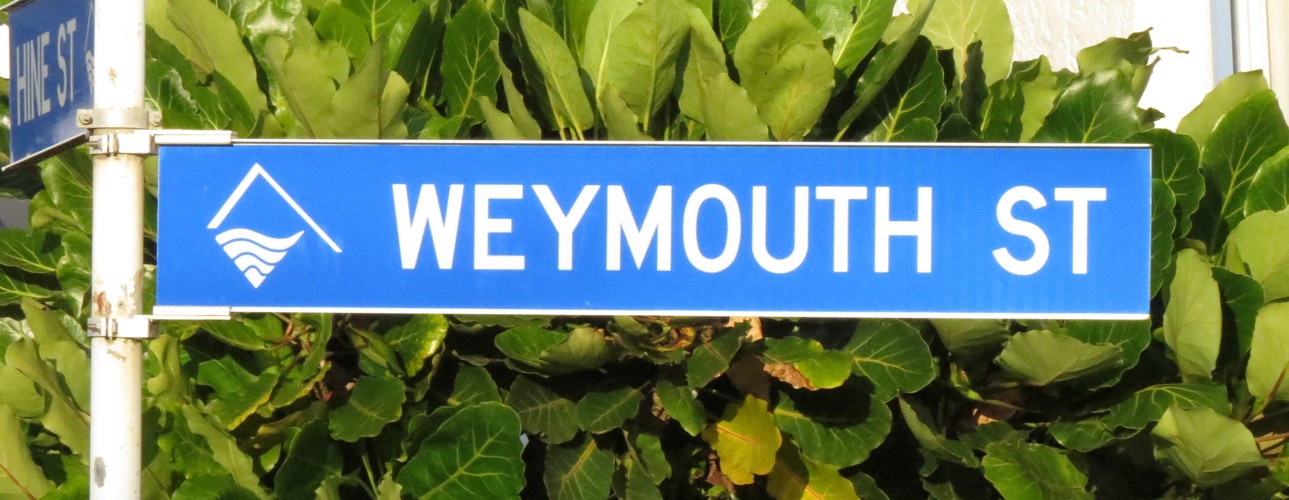 Weymouth Street sign (2021). Rachel Sonius. Word on the street image collection.
Weymouth Street sign (2021). Rachel Sonius. Word on the street image collection.
 Weymouth Street sign (2021). Rachel Sonius. Word on the street image collection.
Weymouth Street sign (2021). Rachel Sonius. Word on the street image collection.
Surveyor Frederic Carrington, who was contracted by the Plymouth Company to lay out New Plymouth’s streets, only borrowed the names of two English towns on his plans. Holsworthy Road was named after the birthplace of several settlers who arrived on the Amelia Thompson. But why Weymouth Street?
One theory is that James “Worser” Heberley was born in the Dorset town. Heberley had accompanied the German explorer Ernst Dieffenbach on his climb up Mount Taranaki on Christmas Day 1839, and probably met Carrington in Wellington. Another theory is that Carrington was honouring the Viscounts of Weymouth.
Whatever the reason, the name ultimately derives from the River Wey. The town overlooks the English Channel and became the summer holiday residence of King George III in the 1780s, the arrival of the railway in 1857 spurring its growth as a tourist destination. Thousands of Anzacs recuperated in Weymouth after being injured at Gallipoli during the First World War. The town was targeted by German bombers during the next war, and tens of thousands of Allied troops departed Weymouth for the beaches of Normandy on D-Day.
Notable residents of Weymouth Street have included W.H. Phipps who ran the Mount Egmont Pigeon Post for those making the trek up the maunga in the early 1900s, and chemist David Teed who built himself the grand villa at Number 12.
The triangular piece of foreshore at the northern end of the street was a popular picnic spot before the First World War and residents improved the view by cutting back the rampant gorse and lupins. Weymouth Street got its first sewers around the same time, laid by the Borough Council’s drainage committee.
When trams began operating in New Plymouth in 1916, the service originally ran from Fitzroy to the railway station, near the Terminus Hotel (now Richmond Estate apartments). But the trams had permission to go all the way to Weymouth Street and operators knew they could make more money in fares from people wanting a dip in the saltwater baths at Kawaroa Park. By 1919 adverts for the baths specified that trams would stop on Weymouth, although sadly this resulted in the death of a horse when it was hit by a tramcar in August of that year.
This story was originally published in the Taranaki Daily News.
Please do not reproduce these images without permission from Puke Ariki.
Contact us for more information or you can order images online here.